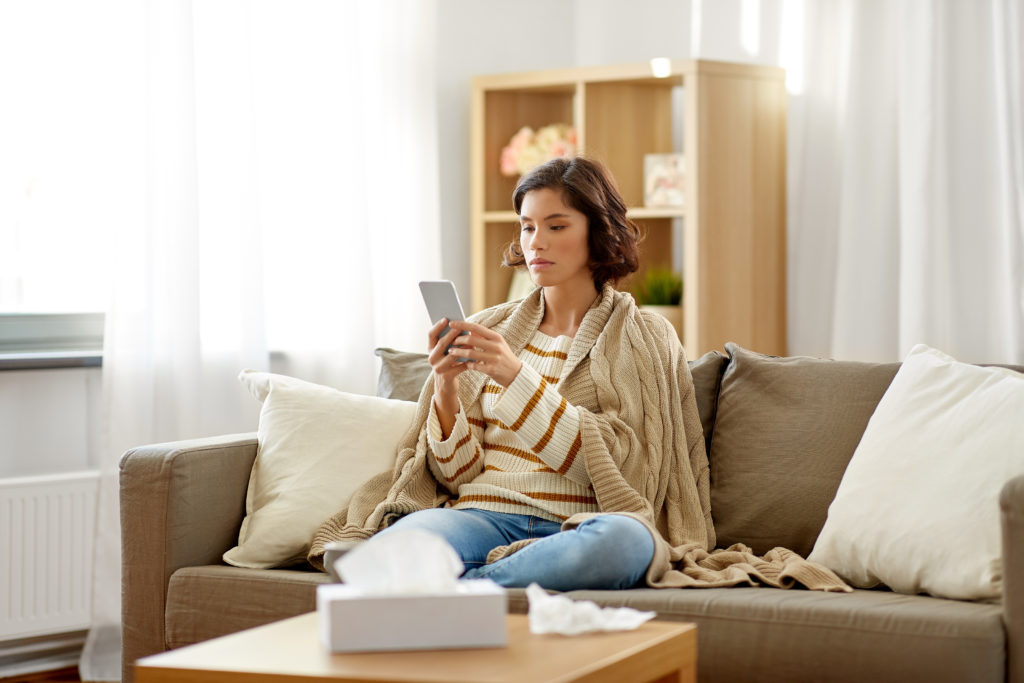Key Insights
- Patients can use symptom tracker apps to help find a potential diagnosis for their symptoms as well as healthcare advice.
- Using the patient’s self-reported symptoms, symptom tracker apps can help patients decide whether or not they should see a doctor.
- The COVID-19 pandemic increased the development, launch, and use of countless symptom tracker apps. Patients have used these to determine their next steps in receiving proper care.
Background
COVID-19 has spurred development of smartphone symptom tracker apps to help patients make healthcare decisions. The Journal of Medical Internet Research (JMIR), for example, used their proprietary COVID-19 symptom tracker application to help gather data about the virus in the early stages of the pandemic, such as what symptoms most patients who tested positive for the virus had experienced.
The study notes that between March 15, 2020, and April 8, 2020, “11,829 of participants completed the symptom questionnaire at least once. Of these, 291 participants stated that they had undergone an RT-PCR (reverse transcription-polymerase chain reaction) test for SARS-CoV-2; 65 reported a positive test result and 226 a negative one.”
From the data gathered through the COVID-19 Symptom Tracker app early in the pandemic, researchers found that “participants with a positive result had, on average, 5.63 symptoms” and that the “most significant risk factors for the disease were diabetes and chronic heart disease.” The app also identified “chills, fever, loss of smell, nausea and vomiting, and shortness of breath as the top five strongest predictors for a COVID-19 infection.” The app also identified uncommon symptoms, nausea, and vomiting, that, although rare, were highly indicative of COVID-19 infection.
With this data, researchers and physicians could identify trademark characteristics of the disease and make more accurate treatment recommendations to their patients. Accurate symptom trackers can help support primary care physicians by providing critical information about symptoms and spread of disease.
How Reliable are the Apps?
In a new study published in BMJ Online, researchers created “200 clinical vignettes” that “were created with a list of gold standard correct conditions.” The list included “a main diagnosis and a list of differential diagnoses” for each vignette. These symptoms were entered into the smartphone apps to gauge their accuracy.
Researchers noted that “the apps varied substantially in coverage, appropriateness of urgency advice, and accuracy of suggested conditions.” The results revealed that physicians “have better performance than the apps on condition-suggestion accuracy,” and “better performance than the apps in the appropriateness and safety of urgency advice.” However, the study notes that “some individual apps performed as well as physicians in urgency advice safety and similarly to physicians in urgency advice accuracy.”
Tracking Apps: Moving Forward
The BMJ Online study notes that “while no digital tool outperformed GPs in this analysis, some came close, and the nature of iterative improvements to software suggests that further improvements will occur with experience and additional evaluation studies.” Additionally,
“the findings are also indicative of the future potential of AI-based symptom assessment technology in diagnostic decision support; however, this is an area that requires specific clinical evidence and regulatory approval. Further studies, which include direct use of the symptom assessment apps by patients, are required to confirm clinical performance and safety.”
Outside of the doctor’s office, the apps can help triage patients appropriately and provide information until the individual can see their primary care physician. The apps can also direct patients to testing centers, clinics, and other sites where they can get immediate care.
Symptom tracker apps help patients navigate an increasingly complex healthcare landscape. The pandemic has disrupted the way patients normally receive care, and mobile technology can provide them with the information they need to keep up with their care outside of the physician’s office. Improvement of this technology will give primary care physicians a new and easier way to ensure their patients stay healthy.










Related Articles
How to Keep Your Patients From Skipping Mammograms
Kristin Schraa, MD, with Virginia Women’s Center shares how women’s health providers can encourage patients ...
3 Ways Healthcare Can Integrate Behavioral Health and Primary Care
Integrating behavioral health with primary care can lead to better patient outcomes — but how ...
How Can Physicians Support Postpartum Mental Health?
On average, 13 percent of mothers in the United States will develop symptoms of postpartum ...
Engaging Patients in Annual Mammograms
Studies show that a little over 66 percent of women aged 40 and older get ...
What Do Medicare-Aged Patients Want in Their Healthcare?
Within the next 20 years, 20 percent of Americans will be 65 or older. It ...
How Health Systems Grow Stronger With Privia Health
Discover how we helped Health First upgrade technology, align physicians, and accelerate toward value-based care. ...